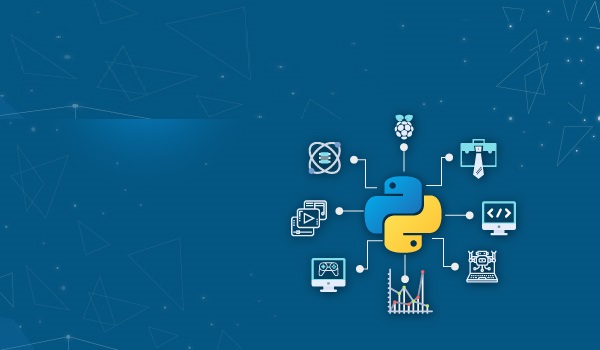
Created by Pianalytix . | Last updated 3/2021
Duration: 9h 26m | 5 sections | 41 lectures | Video: 1280×720, 44 KHz | 4.2 GB
Genre: eLearning | Language: English + Sub
A practical programming course for anyone who wants to improve their productivity. Learn python practically
What you’ll learn
Build Python Projects
Django
Python Project On Image Editor Application
Python Project On Brand Identification
Requirements
Knowledge Of Python
Description
Python is a general purpose, dynamic, high-level, and interpreted programming language. It supports Object Oriented programming approach to develop applications. It is simple and easy to learn and provides lots of high-level data structures.
Python is easy to learn yet powerful and versatile scripting language, which makes it attractive for Application Development.
Python’s syntax and dynamic typing with its interpreted nature make it an ideal language for scripting and rapid application development.
Python supports multiple programming pattern, including object-oriented, imperative, and functional or procedural programming styles.
Python is not intended to work in a particular area, such as web programming. That is why it is known as multipurpose programming language because it can be used with web, enterprise, 3D CAD, etc.
We don’t need to use data types to declare variable because it is dynamically typed so we can write a=10 to assign an integer value in an integer variable.
Python makes the development and debugging fast because there is no compilation step included in Python development, and edit-test-debug cycle is very fast.
Python 2 vs. Python 3
In most of the programming languages, whenever a new version releases, it supports the features and syntax of the existing version of the language, therefore, it is easier for the projects to switch in the newer version. However, in the case of Python, the two versions Python 2 and Python 3 are very much different from each other.
A list of differences between Python 2 and Python 3 are given below:
Python 2 uses print as a statement and used as print “something” to print some string on the console. On the other hand, Python 3 uses print as a function and used as print(“something”) to print something on the console.
Python 2 uses the function raw_input() to accept the user’s input. It returns the string representing the value, which is typed by the user. To convert it into the integer, we need to use the int() function in Python. On the other hand, Python 3 uses input() function which automatically interpreted the type of input entered by the user. However, we can cast this value to any type by using primitive functions (int(), str(), etc.).
In Python 2, the implicit string type is ASCII, whereas, in Python 3, the implicit string type is Unicode.
Python 3 doesn’t contain the xrange() function of Python 2. The xrange() is the variant of range() function which returns a xrange object that works similar to Java iterator. The range() returns a list for example the function range(0,3) contains 0, 1, 2.
There is also a small change made in Exception handling in Python 3. It defines a keyword as which is necessary to be used. We will discuss it in Exception handling section of Python programming tutorial.
Python History
Python was invented by Guido van Rossum in 1991 at CWI in Netherland. The idea of Python programming language has taken from the ABC programming language or we can say that ABC is a predecessor of Python language.
There is also a fact behind the choosing name Python. Guido van Rossum was a fan of the popular BBC comedy show of that time, “Monty Python’s Flying Circus”. So he decided to pick the name Python for his newly created programming language.
Python has the vast community across the world and releases its version within the short period.
Why learn Python?
Python provides many useful features to the programmer. These features make it most popular and widely used language. We have listed below few-essential feature of Python.
Easy to use and Learn
Expressive Language
Interpreted Language
Object-Oriented Language
Open Source Language
Extensible
Learn Standard Library
GUI Programming Support
Integrated
Embeddable
Dynamic Memory Allocation
Wide Range of Libraries and Frameworks
Password/解压密码0daydown
Download rapidgator
https://rg.to/file/7c8acfd6a4918b82443b050de780357e/PythonProgrammingForBeginnersBuild4.part1.rar.html
https://rg.to/file/8cb8ff34563c98e89eaee865348ef39a/PythonProgrammingForBeginnersBuild4.part2.rar.html
https://rg.to/file/eea294181dc953e6d9d586c3ca4227c9/PythonProgrammingForBeginnersBuild4.part3.rar.html
https://rg.to/file/77c63ae1f7f9d765e1f356d9b3cdc2c2/PythonProgrammingForBeginnersBuild4.part4.rar.html
https://rg.to/file/39eb5563e64e5f4182219f3289a3c268/PythonProgrammingForBeginnersBuild4.part5.rar.html
https://rg.to/file/09e1e9f3c3a9cd6b9b57d633c9ab5d22/PythonProgrammingForBeginnersBuild4.part6.rar.html
https://rg.to/file/e3da5c30a3e0bf3ad8345eddb3803d49/PythonProgrammingForBeginnersBuild4.part7.rar.html
Download nitroflare
https://nitroflare.com/view/FE4BAF7B354E17E/PythonProgrammingForBeginnersBuild4.part1.rar
https://nitroflare.com/view/5258840F183DBD0/PythonProgrammingForBeginnersBuild4.part2.rar
https://nitroflare.com/view/11FB5635E9FC56E/PythonProgrammingForBeginnersBuild4.part3.rar
https://nitroflare.com/view/98BEF2BA6AC25F6/PythonProgrammingForBeginnersBuild4.part4.rar
https://nitroflare.com/view/AC5844916F982E0/PythonProgrammingForBeginnersBuild4.part5.rar
https://nitroflare.com/view/40EF5DA8F434687/PythonProgrammingForBeginnersBuild4.part6.rar
https://nitroflare.com/view/B62DDF7AAD8536F/PythonProgrammingForBeginnersBuild4.part7.rar
转载请注明:0daytown » Python Programming For Beginners: Build 4 Real World Projects